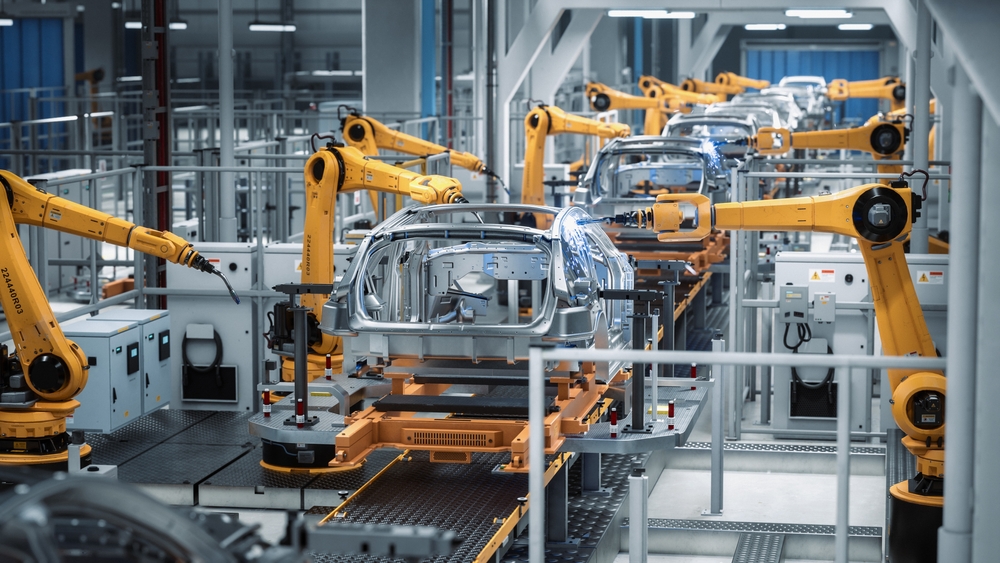

ในระยะสั้น เรามีความกังวลเกี่ยวกับความไม่แน่นอนทางเศรษฐกิจที่อาจส่งผลกระทบต่อความต้องการซื้อรถยนต์ และจะส่งผลกระทบต่อเนื่องไปถึงยอดขายรถยนต์ในประเทศและยอดส่งออกรถยนต์ เรามองว่าแนวโน้มจะสดใสขึ้นในปี 2567 ซึ่งเป็นปีที่ผู้ผลิตรถยนต์ค่ายต่างๆ วางแผนเริ่มผลิตรถ BEV ในประเทศไทย เราคาดว่าผู้ผลิตชิ้นส่วนยานยนต์ที่มีอยู่เดิมจะมีโอกาสได้รับคำสั่งซื้อใหม่และยกระดับการปรับตัวเพื่อรองรับตลาดรถยนต์ไฟฟ้า เรามองว่าการต่อยอดธุรกิจสู่การผลิตชิ้นส่วนรถยนต์ไฟฟ้าอย่างชัดเจนของ AH (หุ้นเด่นของเรา) จะเพิ่มโอกาสเติบโตในอนาคตได้ ยอดผลิตรถยนต์เดือนส.ค.: ตลาดในประเทศอ่อนแอ, การส่งออกแข็งแกร่ง ในเดือนส.ค. ยอดผลิตรถยนต์ของประเทศไทยอยู่ที่ 150,657 คัน (-12% YoY แต่ +1% MoM) ถูกฉุดรั้งโดยยอดขายรถยนต์ในประเทศที่อ่อนแอที่ 60,234 คัน (-12% YoY แต่ +3% MoM) ซึ่งส่วนใหญ่เกิดจากยอดขายรถเพื่อการพาณิชย์ (-29 % YoY) ซึ่งลดลง YoY ติดต่อกัน 8 เดือน โดยมีสาเหตุมาจากการคุมเข้มสินเชื่อรถยนต์จากสถาบันการเงินสืบเนื่องมาจากหนี้ครัวเรือนสูง ยอดส่งออกรถยนต์แข็งแกร่งที่ 87,555 คัน (+19% YoY แต่ -19% MoM) โดยได้แรงหนุนจากตลาดออสเตรเลีย ตะวันออกกลาง และยุโรปเป็นหลัก สำหรับช่วง 8M66 ยอดผลิตรถยนต์อยู่ที่ 1.22 ล้านคัน (+3% YoY) จำนวนรถ BEV ปรับตัวเพิ่มขึ้น จากข้อมูลของกรมขนส่งทางบก ยอดจดทะเบียนรถ BEV ใหม่ (ประเภท 4 ล้อ) เร่งตัวขึ้นจาก 2,006 คันในปี 2564 สู่ 9,614 คันในปี 2565 และ 43,259 คันในช่วง 8M66 ทำให้สัดส่วนรถ BEV เพิ่มขึ้นจากเพียง 0.3% ในปี 2564 สู่ 1.1% ในปี 2565 และ 7.1% ในช่วง 8M66 ซึ่งชี้ให้เห็นว่าราคาที่จับต้องได้มากขึ้นหลังจากผู้ผลิตรถยนต์เข้าร่วมโครงการสนับสนุนการใช้รถ BEV ของรัฐบาล (EV 3.0) ตั้งแต่เดือนมิ.ย. 2565 ทำให้รถ BEV ได้รับการตอบรับที่ดีจากตลาด ผู้ผลิตรถยนต์ที่เข้าร่วมโครงการสนับสนุนการใช้รถ BEV ในปัจจุบันจะได้รับอนุญาตให้นำเข้ารถ BEV เพื่อจำหน่ายพร้อมกับมาตรการสนับสนุนด้านราคาซึ่งจะสิ้นสุดในปีนี้ รัฐบาลวางแผนประกาศต่ออายุโครงการสนับสนุนการใช้รถ BEV (หรือ EV 3.5) ในปีนี้ เพื่อโน้มน้าวให้ผู้ผลิตรถยนต์เข้าร่วมโครงการมากขึ้น โดยมีเป้าหมายเพื่อผลักดันให้ความต้องการซื้อรถ BEV ในประเทศปรับตัวเพิ่มขึ้นอย่างต่อเนื่อง ค่ายรถต่างๆ จะเริ่มผลิตรถ BEV ในประเทศไทยมากขึ้นในปี 2567 ภายใต้โครงการสนับสนุนการใช้รถ BEV ในปัจจุบัน ผู้ผลิตรถยนต์ที่ตัดสินใจนำเข้ารถ BEV เพื่อจำหน่ายระหว่างปี 2565-2566 จะต้องผลิตรถ BEV ในประเทศไทยเพื่อขายในประเทศและส่งออกภายใน 2 ปี (ที่อัตราส่วน 1 คัน ต่อรถ BEV นำเข้า 1 คัน ถ้าเริ่มการผลิตในปี 2567 หรือที่อัตราส่วน 1.5 คัน ต่อรถ BEV นำเข้า 1 คัน ถ้าเริ่มการผลิตในปี 2568) นับถึงปัจจุบัน ผู้ผลิตรถยนต์รายใหม่จากประเทศจีน ได้แก่ BYD และ NETA เป็นผู้นำตลาดรถ BEV ที่วางแผนเริ่มการผลิตในปี 2567 โดยในระยะแรกการผลิตรถ BEV ในประเทศไทยจะมีจำนวนไม่มากนัก เนื่องจากยอดจดทะเบียนรถ BEV ที่ BYD และ NETA นำเข้ามาระหว่างปี 2565- 8M66 อยู่ที่ราว ~2.4 หมื่นคัน หรือ ~1% ของประมาณการยอดผลิตรถยนต์ในปี 2567 ของเรา อย่างไรก็ตาม เรามองว่าการเริ่มผลิตรถ BEV ในประเทศไทยจะเปิดโอกาสให้ผู้ผลิตชิ้นส่วนยานยนต์ที่มีอยู่เดิมได้รับคำสั่งซื้อใหม่ และยกระดับการปรับตัวเพื่อรองรับตลาดรถยนต์ไฟฟ้า (EV) เรามองว่า AH เดินหน้ารุกตลาด EV ชัดเจนกว่าคู่แข่งโดยตรงอย่าง SAT และ STANLY ซึ่งยังไม่มีรายได้จากการผลิตชิ้นส่วน EV อย่างมีนัยสำคัญ ปัจจุบัน AH ให้บริการผลิตชิ้นส่วนขึ้นรูปโลหะ การฉีดพลาสติก และชิ้นส่วนหล่อสำหรับ EV โดยคิดเป็นสัดส่วน ~5% ของยอดขาย บริษัทกำลังพูดคุยกับผู้ผลิตรถยนต์หลายราย รวมถึงผู้ผลิตรถยนต์เครื่องยนต์สันดาปภายใน (ICE) ที่มีอยู่ซึ่งวางแผนขยายธุรกิจไปสู่ EV และผู้ผลิต EV จากประเทศจีน สำหรับโอกาสที่อาจเกิดขึ้น ปัจจัยเสี่ยง 1) ความไม่แน่นอนทางเศรษฐกิจ ค่าครองชีพที่เพิ่มขึ้น และอัตราดอกเบี้ยที่สูงขึ้น ซึ่งอาจส่งผลกระทบต่อความต้องการซื้อรถยนต์ 2) การขาดแคลนเซมิคอนดักเตอร์ และ 3) ระดับของการปรับตัวเพื่อรองรับการเปลี่ยนผ่านจากรถ ICE ของผู้ผลิตชิ้นส่วนยานยนต์ที่มีอยู่เดิม
|
PDF คลิกอ่านเพิ่มเติม AUTO230928_T
PDF Click AUTO230928_E